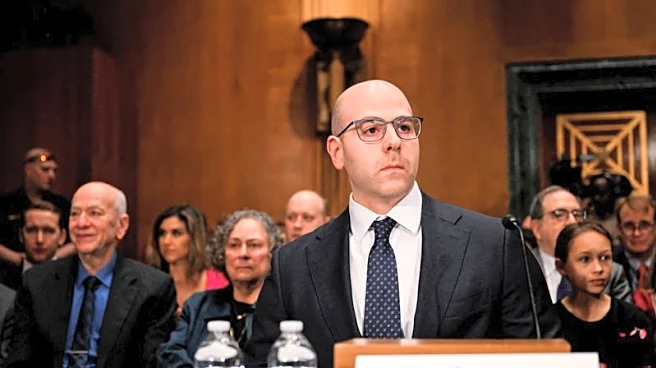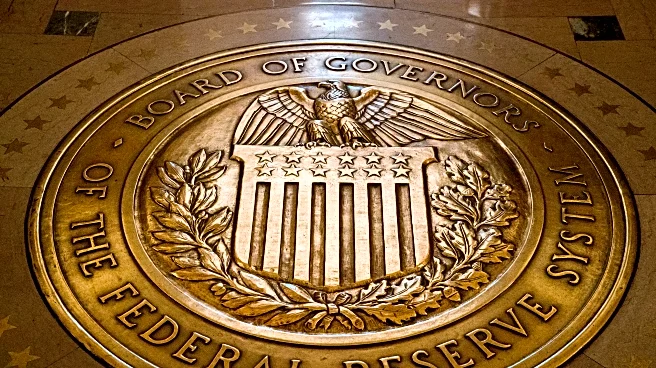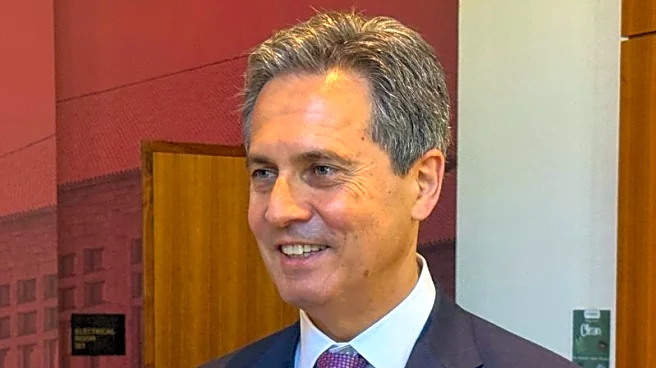What's Happening?
New York Federal Reserve President John Williams has indicated that a gradual reduction in interest rates may be appropriate if the economy aligns with his forecast of modest unemployment gains and softening inflation trends. Williams emphasized the need for a balanced approach to ensure that President Trump's tariffs do not exacerbate inflation while maintaining rates that support the job market. He anticipates GDP growth between 1.25% and 1.50% this year, with unemployment rising to 4.5% next year. The Fed is expected to cut its benchmark interest rate by a quarter of a percentage point at the upcoming policy meeting, aiming to support a softening job market despite high inflation pressures.
Why It's Important?
The potential rate cuts are significant as they reflect the Fed's response to ongoing economic challenges, including trade uncertainties and inflation pressures from tariffs. Lowering interest rates could provide relief to the job market and stimulate economic growth. However, it also raises concerns about inflation control and the Fed's ability to maintain its dual mandate of stable prices and maximum employment. The decision will impact various stakeholders, including businesses, consumers, and policymakers, as they navigate the economic landscape shaped by trade policies and monetary adjustments.
What's Next?
The Fed's decision on interest rates will be influenced by upcoming economic data, including the U.S. employment report for August. A weak jobs report could strengthen the case for a rate cut, while a strong report might complicate the decision. The Fed's policy meeting on September 16-17 will be crucial in determining the direction of monetary policy and its impact on the economy. Stakeholders will closely monitor the Fed's actions and statements for insights into future economic conditions and policy adjustments.













